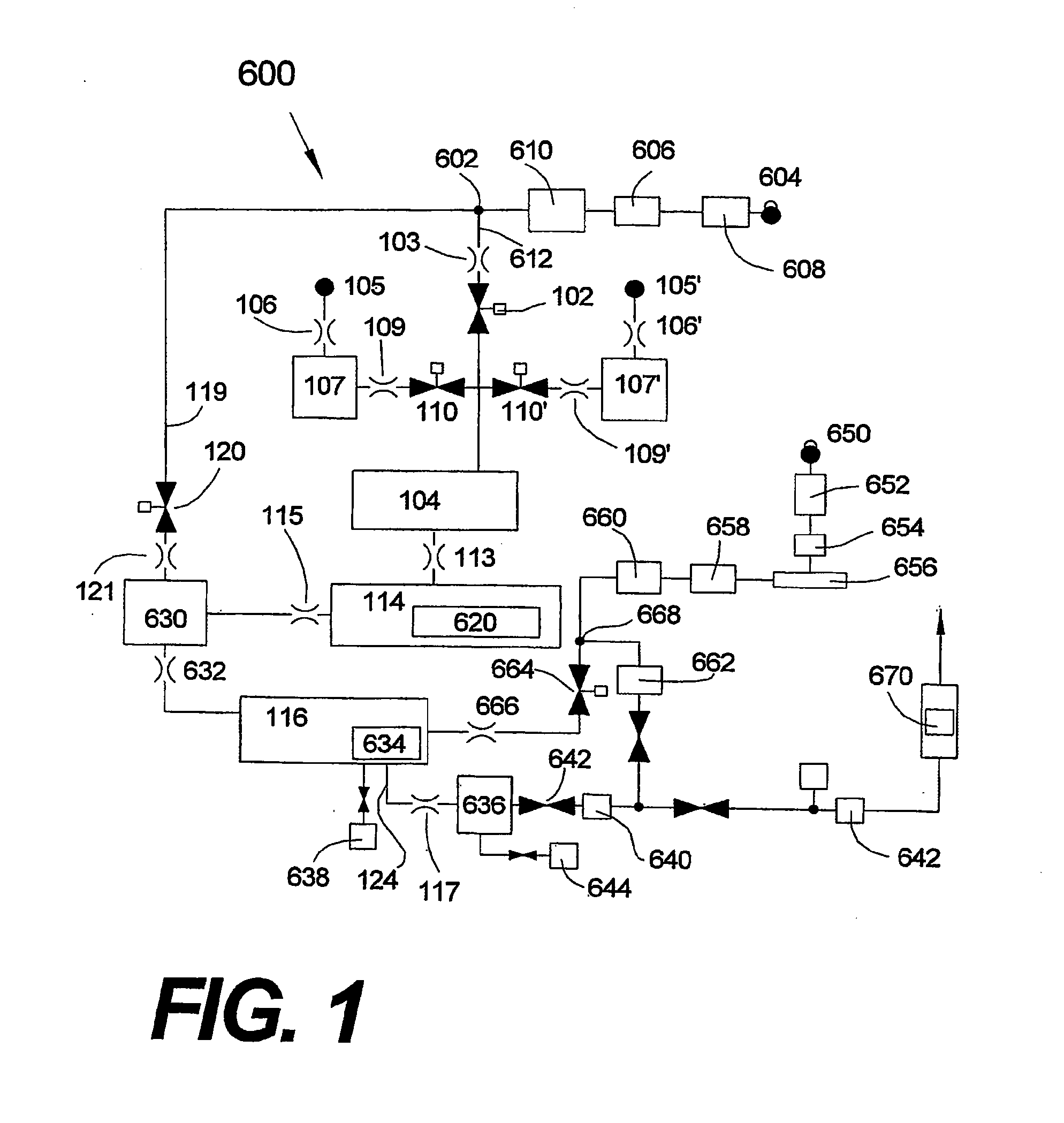Ald apparatus and method
a technology of al applied in the direction of chemically reactive gases, crystal growth process, coating, etc., can solve the problems performance degradation of existing ald apparatus, short equipment uptime, etc., to enhance the advantages of smfd-ald apparatus and method, improve film quality, and enhance material utilization efficiency
- Summary
- Abstract
- Description
- Claims
- Application Information
AI Technical Summary
Benefits of technology
Problems solved by technology
Method used
Image
Examples
embodiment 400
[0093]In another embodiment 400, depicted in FIG. 17, consistent and controlled pressure from relatively non-volatile liquid chemicals is achieved by applying liquid delivery techniques to deliver the precursor with precision into a vaporizing chamber. Vaporization chamber 406 is connected to source chamber 402 through heated gas line 408. The pressure is monitored at the source chamber using a conventional pressure gauge 404 such as the model 628B or the model 631A Baratron manufactured by MKS Instruments, which are suitable to reliably measure the pressure of chemicals and can be maintained at temperatures of 100° C. and 200° C., respectively, to prevent condensation of non-volatile chemicals. Vaporized precursor is delivered to chemical source point 105 through conduit 412. The entire assembly downstream from vaporizer 406 is controlled at a temperature suitable to prevent condensation of the chemical. In certain embodiments, the temperature of vaporizer 406 is controlled separat...
embodiment 700
[0097]An embodiment 700 disclosing a vapor source from solid chemicals is described here with reference to FIG. 19. The source implements a technique to monitor the condensation rate of condensable materials for indirectly evaluating the vapor pressure of these condensable materials. A temperature controlled sensor 710 senses the accumulation of materials on its sensing surface 711. Sensor 710 is preferably a Quartz crystal Microbalance (QCM), a Surface Acoustic Wave (SAW) device sensor, or other thickness monitoring devices or techniques. Sensor 710 continuously indirectly probes the vapor pressure of the molecular precursor in the following manner. The molecular precursor is sublimated using resistive heating or other suitable means to maintain a minimal growth rate of condensed film of molecular precursor on the material accumulation sensor, e.g. a QCM in the preferred embodiment. Hereinafter, a QCM is used as the exemplary sensor, though it should be understood that other sensor...
PUM
| Property | Measurement | Unit |
|---|---|---|
| thickness | aaaaa | aaaaa |
| response time | aaaaa | aaaaa |
| temperatures | aaaaa | aaaaa |
Abstract
Description
Claims
Application Information
 Login to View More
Login to View More - R&D
- Intellectual Property
- Life Sciences
- Materials
- Tech Scout
- Unparalleled Data Quality
- Higher Quality Content
- 60% Fewer Hallucinations
Browse by: Latest US Patents, China's latest patents, Technical Efficacy Thesaurus, Application Domain, Technology Topic, Popular Technical Reports.
© 2025 PatSnap. All rights reserved.Legal|Privacy policy|Modern Slavery Act Transparency Statement|Sitemap|About US| Contact US: help@patsnap.com



